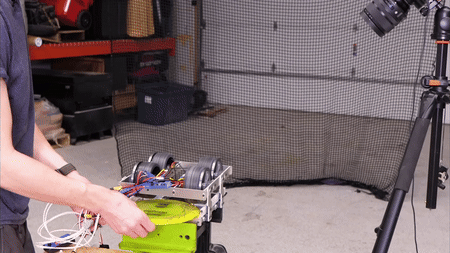How does a Frisbee work?
Hey Friends, Happy Wednesday!
Let’s look at how frisbees work this week. I aim to write my newsletter issues in a way one can follow them while traveling on a bus, having a coffee, waiting for food, etc. Let's jump in!
How it works: 15-second answer
The frisbee spin creates gyroscopic stability, keeping it oriented correctly. Its aircraft wing-like shape generates lift through Bernoulli's principle, where faster air over the top reduces pressure, creating an upward force. Additionally, as the frisbee pushes air downwards, Newton's third law causes an equal upward reaction on the frisbee, contributing to lift. These combined effects enable the frisbee to glide smoothly through the air without flipping or falling immediately.
Let’s explore them in detail.
How does a Frisbee work?
How is this simple motion shown in the gif causing the frisbee to glide in the air for a long time defying gravity? All the following reasons combined make this possible. Let’s explore them one by one.
Figure 1: Frisbee is typically thrown with a spin
Reason #1: Higher pressure on the underside (Lift due to Bernoulli’s principle)
The front edge of a frisbee is similar in shape to that of an aircraft wing. So when the frisbee is thrown, the airstream above a frisbee travels faster than the airstream on the underside due to its geometry and shape.
Moreover, we can derive from the Bernoulli Principle that the pressure in the airflow decreases as the speed of the airflow increases, accounting for the lower pressure on the top of the Frisbee than on the bottom.
Figure 2: Bernoulli’s principle affecting a Frisbee that has an aircraft wing-like shape to give it a lift force upwards
Hence, this pressure difference between the surfaces of the frisbee provides a force upwards from underneath and allows a frisbee to stay airborne while gliding through the air. This upward force is called Lift, which is needed for any aerial vehicle or object to stay airborne and not fall to the ground immediately due to its gravity overpowering it.
But is this the sole reason why a frisbee glides in the air? Not at all, and there is more to the story.
Reason #2: Air pushing the Frisbee upwards (Lift force due to Newton’s third law)
When a frisbee is thrown at an angle with respect to the ground (also called the angle of attack), it glides through the air by pushing the airstream downwards as seen in Figure 2 similar to an airplane wing. The airstream moving horizontally is deflected downwards by the Frisbee here.
Figure 3: Newton’s third law causing air to give frisbee a lift force upwards
Newton’s third law states that every action has an equal and opposite reaction.
Thus, as the frisbee pushes the airstream downwards, the air applies an equal and opposite force pushing the frisbee upwards. This causes an upward lift force on the frisbee to glide through the air without falling due to gravity. The weight of the frisbee pulling it downwards is constantly acting against the upward lift force.
But with only these principles in effect, throwing a frisbee without spinning would cause it to flip up or down and fall to the ground as seen in Figure 4.
Reason #3: Stability while flying due to its spinning motion (Gyroscopic effect)
Figure 4: Frisbee thrown without a spin about its axis flips up or down and falls without gliding.
Spinning creates gyroscopic stability, which prevents it from falling over. To provide some intuition, this same effect helps moving bicycles stay upright, while non-moving bicycles fall over. The stability keeps the frisbee oriented correctly, with the wing shape facing forward. Also, this allows it to stay in the air and fly for as long as it’s spinning fast enough. It only starts to tip over when the spinning slows down too much.
The spinning motion doesn’t cause the frisbee to fly but keeps it in stable flight without flipping up or down and eventually falling to the ground.
This is how a frisbee works!
Gadget of the week
The Talking Toothbrush: Oclean X Ultra S is an AI-powered WiFi toothbrush that speaks to you offering real-time assistance for cultivating better brushing habits. They use bone conduction technology to make this happen. I haven’t tried this out but the technology sounded really cool.
That's all folks. Thank you for reading!
Have an amazing rest of the week, and take care!
Until next to next Wednesday,
Chendur




